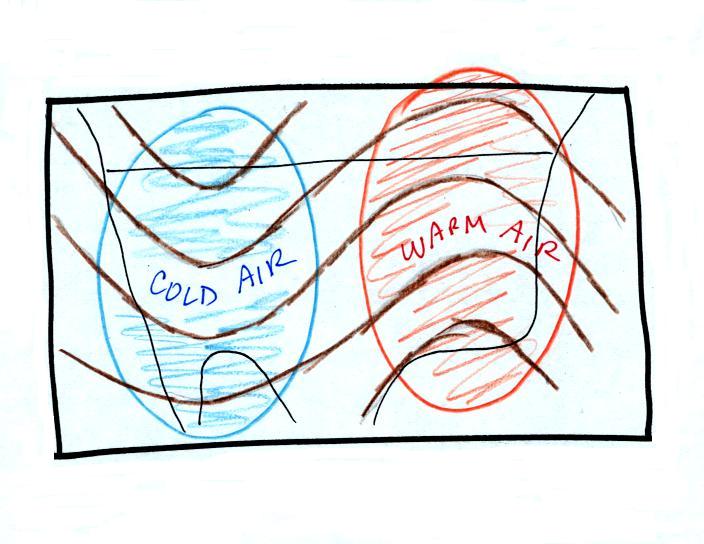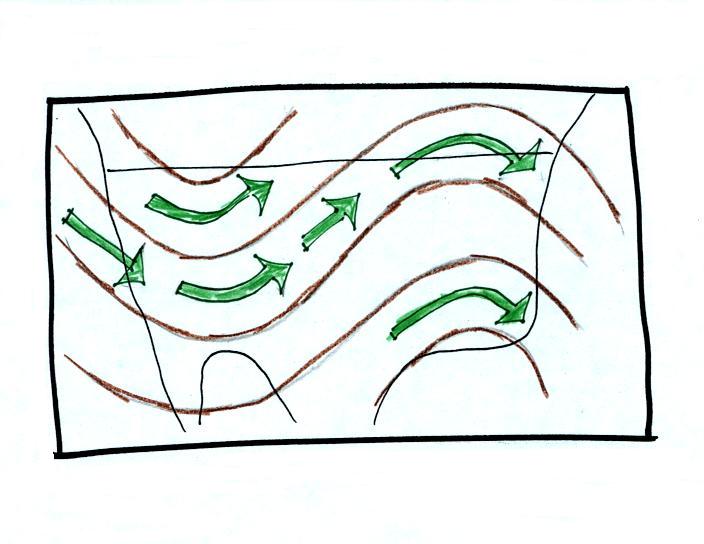Upper Level Charts Pt. 1 -
Basic Features
There is an Optional Assignment that accompanies the upper
level charts required and supplementary reading.
We've been
spending some time
learning about surface weather
maps. Maps
showing conditions at various altitudes above the ground are also
drawn.
Upper level conditions can affect the development and movement of
surface
features (and vice versa). Click here to
download this section in a more
printer friendly format.
In this first section we'll
just learn 3 basic facts about upper level
charts.
First the overall appearance is somewhat different from a surface
weather
map. The pattern on a surface map can be complex and you
generally find circular (more or less)
centers
of high and low pressure (see the bottom portion of the figure
below). You can also find closed high and low
pressure
centers at upper levels, but mostly you find a relatively simple wavy
pattern like is shown on the upper portion of the figure below (sort of
a 3-dimensional view)
A simple upper level
chart pattern is sketched below (a map view). There are two basic
features:
wavy lines that dip southward and have a "u-shape" and lines that bend
northward and have an "n-shape".

The u-shaped
portion of the pattern is called a trough. The n-shaped portion
is called
a ridge.

Troughs
are
produced
by
large
volumes
of
cool
or
cold
air
(the
cold
air
is
found
between
the
ground
and
the upper level that the
map
depicts). The western half of the country in the map above would
probably
be experiencing colder than average temperatures. Large volumes
of warm
or hot air produce ridges. We'll see why this is true in "Upper
level charts pt. 2".

The
winds on upper level charts blow parallel to the contour lines
generally from west to east. This is a little different from
surface winds which blow across the isobars toward low pressure.
An example of surface winds is shown below.

That's it for this first
section. Really all you need to be able to do is
1. identify troughs and ridges,
2. remember that troughs are associated with cold air & ridges with
warm air, and
3. rember that upper level winds blow parallel to the contour lines
from west to east.





